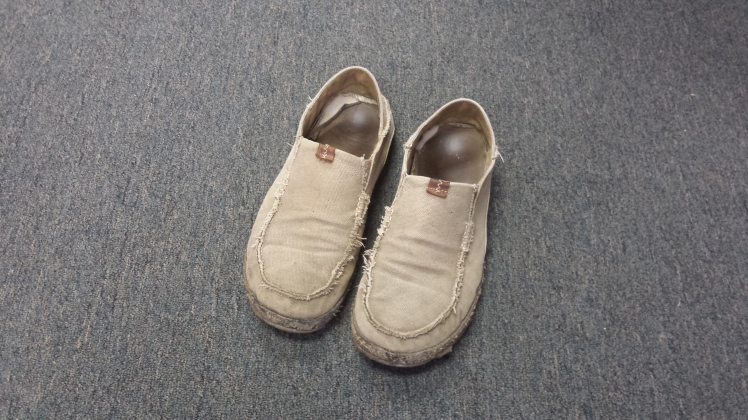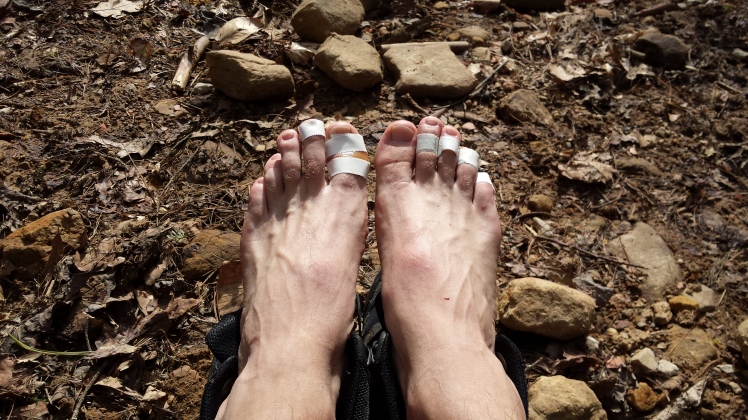“Cuss. Cuss. Cuss.” My thoughts as my cotton canvas shoes tried to leave my feet mid-stream. My dear co-hikers warned me about an abundance of stream crossings in the Big South Fork, but this was ridiculous. I thought the cotton, loose fitting shoes would be good for the creek crossings, but I was sorely mistaken. Not only did they hold enough water to be obnoxious (#cotton), but after the water stretched them out, I had to take the insoles from my boots and put them in my canvas shoes to make them thick enough to stay on my feet. Bad and bad. And to make matters even better (note: sarcasm), they still filled with dirt and hitch hikers (twigs and dirt that get in your shoes) on the stretches between crossings.

Next time around I was prepared. Tevas. Glorious sandals. Breathable (understatement), water proof (understatement), comfortable…but not really that last part, not for at least the first three weeks of wearing them. Who knew the destruction those straps could cause white winter feet? They stayed on for twenty-three (yes twenty-three) creek crossings, but every step on dry land seemed to form a new hot spot. It was a new kind of torture.

“My Chacos broke me in, I didn’t break them in.” This is Squatch’s description of his first time hiking in sandals. It was Squatch who warned me about breaking in my feet before going on this expedition (FYI – Squatch is a co-worker’s trail name. Trail names are usually associated with through-hikers on long distance trails and used in lieu of real names). And so we come to the point: break in your shoes, or feet, in advance of your hike. And bring tape. Lots of tape (see photo above). It all boils down to the number one Leave No Trace principle: “Know before you go and prepare.” The hot spots on my feet never became anything more, but they could have escalated to blisters or infection; continuing to hike on them could have led me to favor one leg over the other, leading to unnecessary strain. All these are bad things on the trail. The best thing you can do is wear your boots or sandals now. Hiking sandals actually appear on our feet while it is still snowing in March as we gear up for our Summer season. It is the nice way to break in our soft winter toes.

Aside from crossing snowfields in Glacier National Park, Tevas are a gift from God when taking on wet environments. What do you think about boots, wet shoes and foot care? Leave your comments below.
–
For fantastic information on hiking foot care, check out this great post by Stephen Regenold at GearJunkie.
Are you curious about hiking in the Big South Fork? Here is a link to the National Park Service page on the region: Big South Fork
And since my coworkers and I are practically having a love affair them, here is a link to Tevas and Chacos.